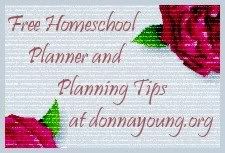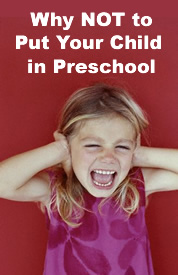Summer has finally hit here in the Central Valley of CA, and it is not only HOT, but it’s humid, too. That’s unusual here. We mostly get HOT weather from May-October, but little humidity. You might as well say we live in the desert. We’re lucky to get 5.72 inches of rain a year! We have an average of 223 sunny days a year, and of those we average 38 days over 100 degrees. Day before yesterday it was 98 degrees and 70% humidity. So now, after a rare extended spring, we are adapting to our summer schedule.
Due to the heat here, we have to do things a little differently in the summer. I try to find a balance between “summer fun” and our year-round school schedule. Here’s what we do:
–Rearrange our schedule: In the summer our kids play outside in the morning and stay inside during the afternoon. They often go outside again in the cool of the evenings (if there is such a thing.) In years past, I’d let them stay out until dark. This year though, we’re trying to keep to our usual bedtime so it isn’t so difficult to readjust bedtimes in the fall.
–Avoid the “summer slump”: Children who take their whole summer off from school lose two months of learning (or more.) To avoid this, we do a light school day (one or two hours) at least three days a week for most of the summer (working it around our vacation days.) My goal is to keep things short, light and fun: We’ll play games (especially math games); do some art projects, baking, or science experiments, and read, read, read (read aloud.) This year, I need our boys to keep up their reading practice and cement those math facts, too.
Learning Ideas for Summer:
-Explore new ways of learning: If you normally use textbooks, try a summer unit study. Choose a subject your child is fascinated with, and explore it together. If you avoid art, music, science experiments or geography during the school year, spend some time doing some “catch-up” work (err, I mean fun) in those areas over the summer.
-Try lapbooking, notebooking, scrapbooking or stamping.
-Continue doing your Bible study, devotions and memory work through the summer. I’ve learned the hard way that if we skip our Bible time, my children’s behavior starts to deteriorate.
Summer Ideas For Moms:
–Be sure to give yourself some time to recoup and refresh. Try to arrange a day alone, time alone with your husband, and time with a friend.
-Lay out your plans for next year’s schooling: Use the lighter summer schedule to explore new curriculum options, decide on your curriculum, and prayerfully set goals for each child.
-Spend some time reading a novel or catching up on your “how to homeschool” books.
Favorite FUN Activities For Kids of all Ages:
Summer isn’t summer without some fun! Plan to spend some time in nature, even if it’s just a day trip. For fun around the house, try:
-Playing in the mud (use a water hose to make rivers, lakes, and mud pies.)
-Coloring with sidewalk chalk
-Painting with Crayola brand sidewalk paint using old, heavy paintbrushes (it washes off the cement just like chalk does.)
-“Painting” the sidewalk with paintbrushes and buckets of water.
–Making a “playhouse”: Ask you local appliance store if you can have an old refrigerator box for your kids to paint, and then play in. Cut out windows and a door using an Exacto knife. (This is a job for Mom or Dad.)
-“Camping” in the backyard: Either set up a tent, or sleep under the stars. Be sure to turn off the automatic sprinklers first!
-Blowing bubbles
-Using old soda bottles and a baseball to “bowl”.
-Combining toys in new ways: If you haven’t done this yet, try adding plastic animals/”Pet Shop” animals/cars to blocks; Toilet paper for bandages for a doctor kit (add a cat carrier and stuffed animals to play “vet”, or check out these PROP BOX ideas.)
-Have a woodworker in the family? Try asking if you can have all the little leftover pieces of wood–especially those small, odd shapes. Glue them together to make a sculpture, or use a combination of nails and wood-glue to make a unique creation (one year I made a “house boat” for my Barbie dolls that way.) Note: Be careful of splinters!
-Try using a variety of different sized containers and freeze water in them (old yogurt cups, plastic margarine containers, etc.) Pop the ice out and let your child play with it in the tub, the pool, or outside (science!) Tip: Freeze small plastic animals in some of your containers.
-Consider investing in one keepsake “family toy” over the summer. Our ultimate favorites are:
Marbleworks have been a long-time favorite around our house for children who can be trusted not to put things in their mouths. At first we had to help them build it, but now they create their own special design with drops, jumps, and more.
Dr. Drew’s Blocks (we made our own)
Brio or Thomas wooden train sets: Target.com carries some nice sets. Brio or Thomas brands are the best, and they are compatible with each other–but they are very expensive. However, any nice wooden set will suffice, although I’d check to make sure it was “Thomas” compatible. We bought the wooden tracks on the cheap, and added the “Thomas” trains. A few times we caught “Thomas” sets on clearance. Over the years, we built up a large set.
-Make an obstacle course in your back yard.
-Have a family game night. For preschoolers, try Hi-Ho Cheerio, Candyland, or Chutes and Ladders. Our newest faves are Uno Flash (ages 7+), King Me Checkers, and various card games.
-Make “waterland”: That’s what my kids call it, anyway. When our kids were little, we put our snap-set side pool under the slide (get the 8 foot size if you can), filled it up, and then ran water down the slide to make our own water slide. You should stand in the water and “catch” your kids the first few times, until you see how far they slide on landing. (WARNING: They’ll go FAST!) HERE is a link to a great idea from Family Fun Magazine that shows you how to use PVC pipes to make your own “waterpark.”
-Make some art, then have an art show—invite your friends and family!
-Christmas in July: Finally finish those big, messy art/craft projects you meant to make for Aunt Ruth the last three Christmases…spend a week or two making Christmas presents and crafts.
FUN Activities for older kids:
-Teach your children to play traditional games like Jacks (age 6+), Hopscotch, (ages 5+), Chinese Jump-rope (age 7+), and Marbles (age 6+) Jump-rope and skippers are fun, too.
-Set up an area where your children can pound nails OR set up an “inventor’s laboratory” with all types of things to take apart, “repair”, or build. (Supervise carefully.)
For more ideas, check out:
www.funattic.com/game_summer.htm
http://www.amazingmoms.com/htm/summerfun.htm
Have a fun and safe summer!
~Susan
© 2010 Susan Lemons all rights reserved.





